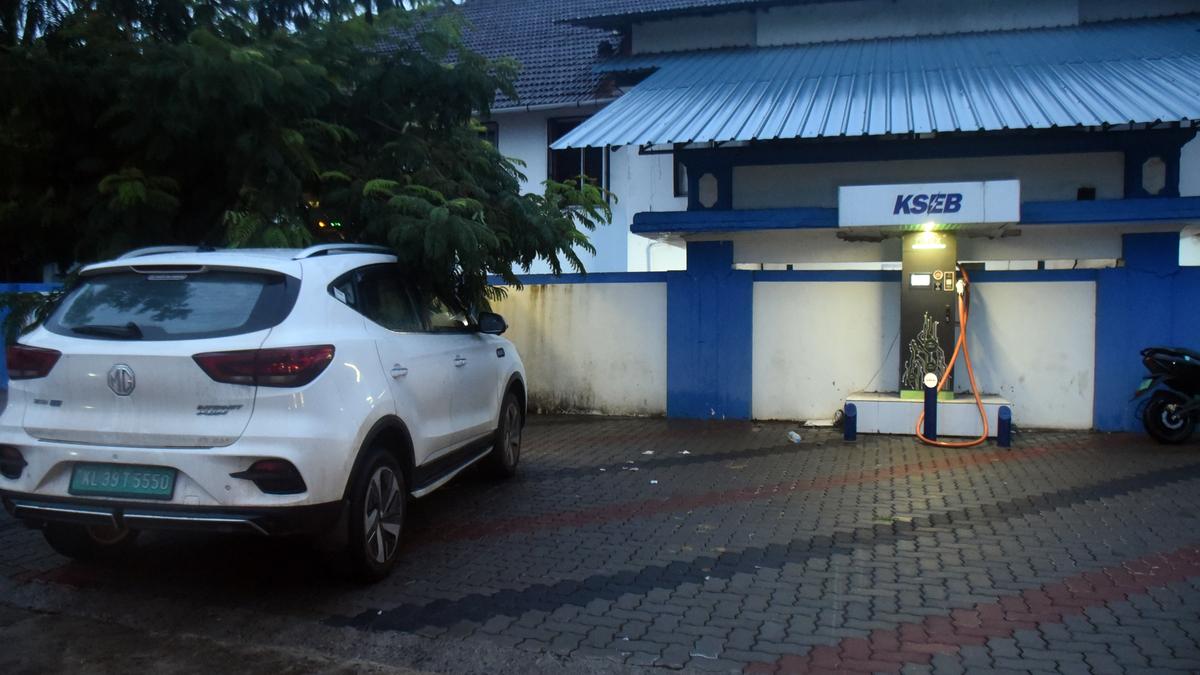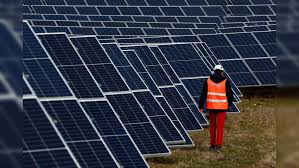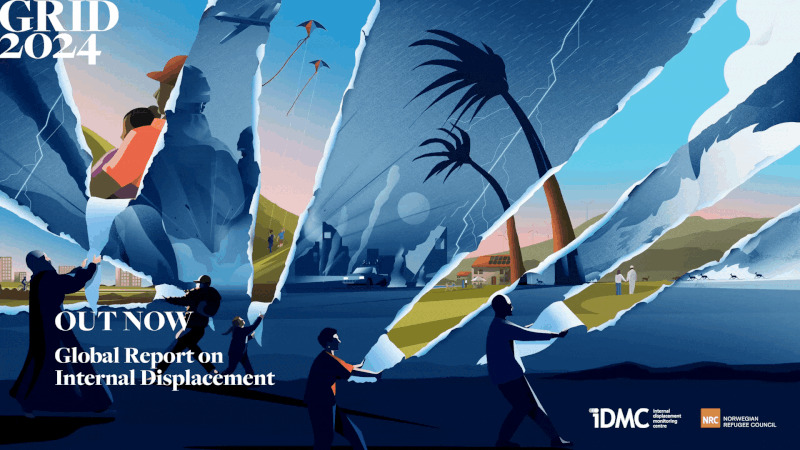Saksham Counter-Unmanned Aerial Threat Grid System
- 13 Oct 2025
In News:
- The Indian Army has initiated induction and fast-track procurement of “SAKSHAM” (Situational Awareness for Kinetic Soft and Hard Kill Assets Management), an indigenously developed, AI-enabled Counter-Unmanned Aerial System (C-UAS) grid created with Bharat Electronics Limited (BEL).
- Designed as a modular Command & Control (C2) backbone, SAKSHAM provides real-time detection, tracking, identification and neutralisation of hostile drones and other low-altitude aerial threats across the specially defined Tactical Battlefield Space (TBS) or Air Littoral — the airspace up to 3,000 metres (≈10,000 ft) above the ground.
What SAKSHAM is — technical outline
- Purpose: A unified C2 grid to secure ground formations by controlling low-altitude airspace, countering drone surveillance, weaponised UAS and swarms.
- Developer & partners: Designed and developed indigenously by Bharat Electronics Limited (BEL) in collaboration with the Indian Army’s Corps of Air Defence.
- Architecture & connectivity: Operates over the encrypted Army Data Network (ADN) and presents a GIS-based, common recognised air picture that fuses data from C-UAS sensors, friendly and hostile UAS feeds, and both soft- and hard-kill effectors.
- AI & fusion capabilities: Uses AI/ML-driven fusion to automate threat classification (friendly / neutral / hostile), prioritise responses, and support automated or semi-automated soft-kill (jamming/spoofing) and hard-kill (kinetic) decisions.
- Interoperability: Integrates inputs from India’s automated air-defence network Akashteer and is designed for plug-and-play addition of sensors, jammers, lasers/EMP and future upgrades.
Why SAKSHAM was conceptualised
The Army’s operational experience during Operation Sindoor (2025) — where hostile drone activity exposed detection and response gaps — accelerated the need for a comprehensive C-UAS framework and a shift from traditional Tactical Battle Area concepts to the more inclusive Tactical Battlefield Space (TBS) that explicitly includes the Air Littoral. SAKSHAM is a direct response to those operational lessons.
Operational and strategic impact
- Enhanced situational awareness: A common, real-time air picture shortens decision loops and reduces fratricide risk while allowing freedom of manoeuvre for friendly aerial assets.
- Force protection & deterrence: Rapid detection and neutralisation of drone threats protects troops, logistics nodes and infrastructure from ISR (intelligence, surveillance, reconnaissance) and weaponised UAS attacks.
- Atmanirbhar capability: Indigenous design and BEL partnership strengthen defence manufacturing and upgradeability—key to the Army’s Decade of Transformation (2023–2032) and wider strategic autonomy.
- Scalability & integration: FTP approval and modular design aim for rapid rollout across field formations, enabling layered C-UAS coverage and future networked integration with other services and civil air-safety systems.
Grid Connected Rooftop Solar Scheme

- 31 Aug 2025
In News:
The Grid Connected Rooftop Solar Scheme was launched by the Government of India to promote clean energy, reduce dependence on fossil fuels such as coal and petroleum, and control pollution. By harnessing solar power through rooftop installations, the scheme provides households, institutions, and commercial entities with access to low-cost, sustainable electricity, while contributing to India’s climate goals.
Solar Rooftop System
- Definition: Installation of solar photovoltaic (SPV) panels on rooftops of residential, commercial, industrial, and institutional buildings.
- Types:
- With Battery Storage – Stores excess solar energy for later use.
- Grid Connected (SPV System) – Converts DC power from solar panels into AC power, which is used for captive consumption and surplus energy is fed into the grid. During low solar generation, the grid compensates for the shortfall.
Objectives of the Programme
- Achieve 40,000 MW capacity by 2022 (target set under the National Solar Mission).
- Central government allocation: ?11,814 crore.
- Phase II incentives:
- Up to 40% subsidy for systems up to 3 kW.
- 20% subsidy for systems between 3–10 kW.
- Increase the role of Distribution Companies (DISCOMs) in promotion and implementation.
Advantages of Grid-Connected Rooftop Solar
- Economic:
- Reduces consumer electricity bills.
- No additional land requirement as panels are roof-mounted.
- Short gestation period compared to large-scale power projects.
- Technical:
- Minimises transmission and distribution losses.
- Reduces congestion and improves voltage at tail ends of distribution lines.
- Environmental:
- Cuts carbon emissions.
- Strengthens long-term energy and environmental security.
Implementation & Nodal Ministry
- Implemented by the Ministry of New and Renewable Energy (MNRE).
- MNRE promotes research, innovation, and global collaboration in renewable energy sectors (solar, wind, hydropower, and biogas).
- Broader goals include:
- Increasing renewable energy share in India’s energy mix.
- Reducing dependence on oil-based energy.
- Supporting clean cooking, heating, and energy equity across regions.
Vehicle-to-Grid (V2G) Technology

- 18 Mar 2025
In News:
Vehicle-to-Grid (V2G) is an innovative energy solution that allows Electric Vehicles (EVs) to not only draw power from the grid (charging) but also send excess stored electricity back to the grid (discharging) when not in use. This bi-directional energy flow creates a unique opportunity to support grid stability, especially when renewable energy (RE) sources like solar and wind are intermittent. When connected via bi-directional chargers, EV batteries can act as decentralized storage systems, offering a potential solution to address the challenges posed by renewable energy integration and peak demand periods.
Global Adoption and Benefits of V2G
V2G technology has gained significant traction in developed EV markets like Europe and the U.S., where it is seen as a cost-effective solution for distributed energy storage.
- In the U.K. and the Netherlands, EV owners are compensated for supplying excess energy to the grid, particularly during peak hours.
- In California, EVs are integrated into the ancillary services market, helping improve grid reliability.
- Additionally, V2G technologies have shown promise in offering emergency power during natural disasters and grid failures, proving to be an essential tool for enhancing grid resilience.
V2G in India: Current Status and Challenges
In India, V2G technology is still in its nascent stages. While there is a growing adoption of EVs and charging infrastructure, integrating these vehicles into the national grid remains a challenge. The electricity market in India is not yet fully equipped to support decentralized energy solutions like V2G. The current grid structure, characterized by variable RE generation and mismatches in supply and demand, requires significant regulatory and structural changes for successful V2G integration.
The Kerala State Electricity Board (KSEB) and the Indian Institute of Technology Bombay (IIT Bombay) have launched a pilot V2G project to assess the feasibility of this technology in the state. This project will explore how EVs can help support grid demand during peak hours, particularly when solar energy generation is low, as Kerala experiences both rapid EV adoption and increasing rooftop solar installations.
Key Features of V2G
- Charging (G2V): When an EV is charged, it functions as a load on the grid. This process can be managed through Time of Use (ToU) electricity tariffs, which incentivize charging during off-peak hours to reduce grid stress.
- Discharging (V2G): When EV batteries discharge power back to the grid, they act as distributed energy resources. This is especially valuable during periods of high demand or when renewable energy generation is insufficient.
- Decentralized Energy Storage: V2G enables EVs to serve as decentralized storage units, reducing the dependency on centralized storage systems and making the grid more resilient and efficient.
Advantages for the Indian Power Sector
- Grid Stability: V2G can help modulate the power flow in the grid by reducing the impact of variable RE generation. It also helps to stabilize grid operations during peak demand periods.
- Support for Renewable Energy: By enabling EVs to store excess solar energy during the day, V2G can assist in using this stored power during nighttime or when renewable energy generation is low, contributing to true decarbonization.
- Smart Charging: Integrating V2G with smart charging systems can help optimize energy use, ensuring that EVs charge during periods of high renewable energy generation and discharge during peak demand.
Potential for Wider Adoption
The Kerala pilot project is expected to pave the way for broader V2G implementation across India. The project aims to test how EVs can provide support during peak demand, particularly when solar power generation is unavailable. The integration of smart charging solutions and V2G will help mitigate concerns about increasing electricity demand due to the growing number of EVs. Additionally, incentives for EV owners to participate in V2G systems can lead to cost-effective solutions for grid management.
The Indian government, through the Central Electricity Authority (CEA), has already initiated steps to frame guidelines for reverse charging (V2G). With the increasing adoption of EVs and solar power, V2G has the potential to become a cornerstone of India's energy future.
One Sun One World One Grid (OSOWOG) Initiative

- 10 Nov 2024
In News:
- India is in talks with Oman, UAE, Saudi Arabia, Maldives, and Singapore to establish cross-border electricity transmission lines.
- This is part of the ambitious OSOWOG initiative to create a global renewable energy grid.
Key Points:
- Proposed by the Prime Minister of India at the 2018 International Solar Alliance (ISA) Assembly.
- Aims to create a transnational electricity grid that delivers power worldwide.
- Led by India and the UK, in collaboration with ISA and the World Bank Group.
Vision of OSOWOG:
- Connect regional grids through a common infrastructure for the transfer of renewable energy, focusing on solar power.
- Harness solar and other renewable energy from regions where the sun is shining and efficiently transmit it to areas of need.
- Aim to provide power to 140 countries using clean and efficient solar energy.
Phases of OSOWOG:
- Phase 1:
- Connect the Indian grid with grids in the Middle East, South Asia, and South-East Asia.
- Share solar and other renewable energy resources.
- Phase 2:
- Expand the interconnected grid to include renewable resources from Africa.
- Phase 3:
- Achieve a global interconnection aiming for 2,600 GW by 2050.
- Integrate as many countries as possible into a single renewable energy grid.
Global Collaboration:
- Involves national governments, international organizations, legislators, power operators, and experts.
- Focus on accelerating infrastructure development for a clean energy-powered world.
Global Report on Internal Displacement 2024 (GRID-2024)

- 16 May 2024
Why is it in the News?
Floods, cyclones, earthquakes and other disasters triggered over half a million internal displacements in India in 2023, according to Geneva-based Internal Displacement Monitoring Centre (IDMC).
About Global Report on Internal Displacement 2024:
- The Global Report on Internal Displacement (GRID) 2024, published by the Internal Displacement Monitoring Centre (IDMC) based in Geneva, Switzerland.
- It is the authoritative source for data and analysis on the state of internal displacement for the previous year.
- Each year, IDMC presents the validated estimates of internal displacements by conflict and disasters, and the total cumulative numbers of IDPs worldwide.
- The GRID also provides an overview of the year’s most significant internal displacement situations, highlighting potential measures to address the issue across the humanitarian, development, disaster risk reduction and climate change agendas.
- The 2024 Global Report on Internal Displacement (GRID) report presents the data and analysis behind the 75.9 million people living in internal displacement as of the end of 2023.
- It is the ninth edition of the GRID and includes global and regional insights into the risk, scale and impacts of internal displacement.
Highlights of the GRID 2024:
- Rising Numbers of (IDPs): In 2023, the number of internally displaced persons (IDPs) reached 75.9 million, up from 71.1 million the previous year.
- Causes of Displacement: Disasters contributed to 7.7 million displacements, with earthquakes being responsible for one-fourth of these.
- Conflict and violence led to 68.3 million displacements.
- High-Displacement Countries: Sudan, Syria, the Democratic Republic of Congo (DRC), Colombia, and Yemen account for almost half of the world's IDP population.
- Significant Increases: Sudan had the highest number of IDPs recorded for a single country in 2023, reaching 1 million.
- The majority of new displacements occurred in Sudan, the Palestinian territories, and the DRC, accounting for nearly two-thirds of all cases.
- South Asia Displacement: Approximately 3 million people across South Asia experienced internal displacement due to conflict and violence, with 80% of them located in Afghanistan.
- Manipur violence resulted in 67,000 displacements, marking the highest number of conflict and violence-related displacements in India since 2018.
- Impact of Natural Disasters: There was a notable decrease in internal displacement due to natural disasters in India in 2023, dropping from 2.5 million in 2022 to 528,000.
About Internal Displacement Monitoring Centre (IDMC):
- Established in 1998, the IDMC is the leading source of information and analysis on internal displacement.
- It was created to address a significant gap in knowledge on global patterns and scales of internal displacement.
- IDMC defines internal displacement as the number of forced movements of people within their own country over a given year.
- The IDMC is a part of the Norwegian Refugee Council (NRC), an independent, non-governmental humanitarian organization.
- Primary Roles: The IDMC serves as a global monitor and advocate for evidence-based policy and action.
- It aims to influence governments, UN agencies, donors, international organizations, and NGOs.
- As the official repository of data and analysis on internal displacement, the IDMC's GRID provides critical insights into the global internal displacement crisis and aids in developing informed solutions.
National Judicial Data Grid (NJDG) portal (PIB)
- 15 Sep 2023
What is the News ?
Recently, the Chief Justice of India declared the inclusion of the Supreme Court in the National Judicial Data Grid (NJDG) during a public court session.
Facts About:
- The National Judicial Data Grid (NJDG) portal serves as a comprehensive national database for tracking cases in courts throughout India.
- It provides access to case-related information and statistics, including the number of cases filed, pending, and resolved, as well as case types and year-wise data for the Supreme Court of India.
- The NJDG portal is part of the e-Courts Project and covers 18,735 District & Subordinate Courts and High Courts.
- Developed by the National Informatics Centre (NIC) in collaboration with the Computer Cell, Registry's software development team, the NJDG portal features an interactive interface and analytics dashboard.
- It is regularly updated with current case data and serves as a valuable tool for monitoring and managing case backlogs, supporting policy decisions to expedite case resolution, and improving overall court performance.
- Additionally, it aids in tracking land dispute cases.
One Sun, One World, One Grid (OSOWOG) (PIB)
- 11 Sep 2023
What is the News ?
New Delhi recently hosted a full-day conference discussing "Transnational Grid Interconnections for One Sun, One World, One Grid (OSOWOG).
Facts About:
The OSOWOG initiative was introduced by the Prime Minister of India during the First Assembly of the International Solar Alliance (ISA) in October 2018.
Its goal is to link energy supply across international borders.
Vision:
- The initiative plans to connect various regional power grids using a common grid to transmit renewable energy, especially solar power.
The project is a collaboration between the governments of India and the UK, along with the International Solar Alliance (ISA) and the World Bank Group.
It will bring together governments, financial organizations, legislators, power operators, and experts to speed up the development of the infrastructure needed for a world powered by clean energy.
Completion timeline:
- The ISA is expected to establish this grid in the next few years.
- Once operational, it will transmit solar power to different countries.
